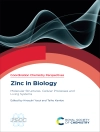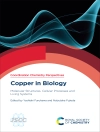This book introduces readers to fundamental information on phosphor and quantum dots. It comprehensively reviews the latest research advances in and applications of fluoride phosphors, oxide phosphors, nitridosilicate phosphors and various quantum dot materials. Phosphors and phosphor-based quantum dot materials have recently gained considerable scientific interest due to their wide range of applications in lighting, displays, medical and telecommunication technologies.
This work will be of great interest to researchers and graduate students in materials sciences and chemistry who wish to learn more about the principles, synthesis and analysis of phosphors and quantum dot materials.
Innehållsförteckning
Exploration of New Phosphors Using a Mineral-Inspired Approach in Combination with Solution Parallel Synthesis.- Phosphors for field emission display: recent advances in synthesis, improvement and luminescence properties.- Phosphors with a 660 nm-featured emission for LED/LD lighting in horticulture.- The Application of Phosphor in Agriculture Field.- Rare Earth Solar Spectral Convertor for Si Solar Cells.- Persistent Luminescent Materials.- Foundations of Upconversion Nanoparticles.- Lanthanide-Doped Upconversion Nanoprobes.- Lanthanide-doped core-shell upconversion nanophosphors.- Upconversion luminescence behavior of single nanoparticles.- Persistent Luminescence Nanomaterials for Biomedical Applications: A Quick Grasp of the Trend.- Upconversion Nanoparticles for Bioimaging.- Upconversion Nanoparticle as a Platform for Photoactivation.- Foundations of White Light Quantum Dots.- Cadmium Free Quantum Dots: Principal attractions, properties, and applications.- Synthesis of In P Quantum Dots and Their Application.- Carbon Nitride Quantum Dots and their Applications.- Luminescent Materials for 3D Display Technology.
Om författaren
Professor Ru-Shi Liu is currently a professor at the Department of Chemistry, National Taiwan University. He received his Bachelor’s degree in Chemistry from Soochow University (Taiwan) in 1981, and his Master’s degree in Nuclear Science from the National Tsinghua University (Taiwan) in 1983. He obtained two Ph D degrees in Chemistry – one from National Tsinghua University in 1990 and one from the University of Cambridge in 1992. He worked at Materials Research Laboratories at the Industrial Technology Research Institute from 1983 to 1985. He was an Associate Professor at the Department of Chemistry of National Taiwan University from 1995 to 1999, and appointed a professor in 1999. His research focuses on the field of Materials Chemistry. He is the author or coauthor of more than 500 publications in scientific international journals, and holds more than 100 patents.












